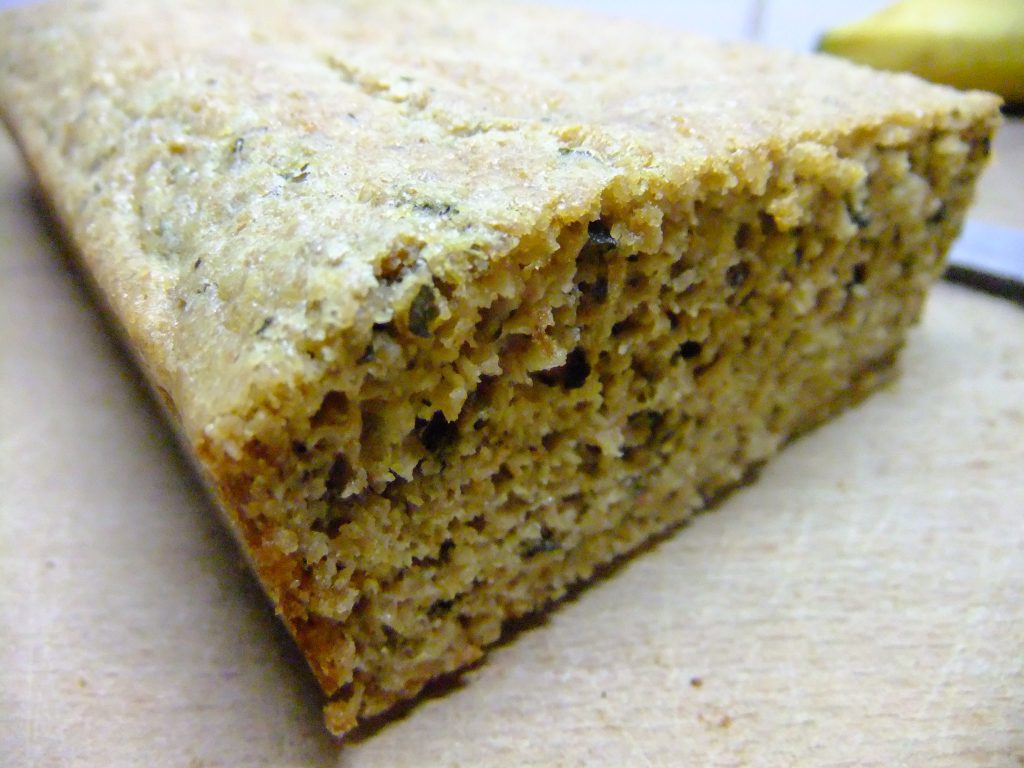This bread is soft and moist and really filling. It’s such a huge treat when you are off grains! Because its high in protein and fibre (unlike normal breads) you don’t need to eat it with extra protein in order to avoid blood sugar dips and energy crashes. Enjoy it with my special buttery spread for bread, with virgin coconut oil or organic butter (or clarified butter for dairy intolerant people). If you want to increase your energy levels, use the coconut oil as a spread instead of butter (unlike butter, the MCT fraction of coconut oil – about 50% – goes straight into energy production)
Dry ingredients:
100g milled flax seeds. Flax is another name for linseed.
20g ground almonds
½ level tsp Atlantic sea salt or Himalayan salt (NOT ordinary table salt which contains harmful additives)
1 level tsp bicarbonate of soda (also called bread soda)
Plus, if you have it, one of the following
2 tsp dried oregano and 1 level tsp of paprika
1 level tsp Ceylon cinnamon and/or ½ level tsp cardamom
1/2 tsp each ground cumin and coriander
Finely grated rind of organic lemon
Wet ingredients:
2 eggs
1/3 cup (approx. 80ml) water, home made dairy kefir or non-dairy kefir*
1/3 cup extra virgin olive oil
1. Turn on the oven to 150C (or 140C for fan)
2. Mix together all the dry ingredients. In a separate larger bowl whisk or beat together the wet ingredients.
3. Add the dry ingredients to the wet and mix together well.
4. Line a 1lb/450g loaf tin (around 15 x 94 x 74cm) with greased parchment or greaseproof paper, pour in the mix and bake for 50-60 mins.
[If you only have a 2lb loaf tin (around 23 x 13 x 7cm) you can still use it but reduce the baking time to around 40 minutes. The resulting loaf will be half the normal height].
5. The loaf is done when a needle or knife inserted into the thickest part of the bread comes out clean. Remove from oven, remove paper and cool on a wire rack. Refrigerate if you intend keeping it for more than 1-2 days.
Variation
For a deliciously moist courgette flax loaf reduce the amount of kefir/water to 50ml and add 1 medium courgette, finely grated, to the dry ingredients.
*In my tags for this recipe I say this bread is dairy-free, so how come kefir is allowed, when its usually made from milk? This is because, if you make your own kefir properly at home, the problematic milk protein (casein) and lactose (milk sugar) have been broken down by the fermentation process. Kefir “grains” hydrolyse (break down) casein, and digest lactose, turning it into lactic acid. Good news all round, if you are recovering form dairy intolerance. Kefir also contains over 20 different types of beneficial bacteria to help heal digestive issues. Unsweetened non-dairy kefir can be a good option for shop-bought.
Why this is better for you
You may wonder why I mention kefir in a “dairy-free recipe”. Kefir is tolerated by people with dairy intolerance because provided it is properly made (at home) it contains no lactose and no casein. Lactose is the milk sugar that’s problematic in lactose intolerance. Most yoghurts still contain lactose because they are not properly (fully) fermented. Yoghurt you make at home will not contain lactose. Casein is the milk protein that dairy intolerant people react to. Kefir grains “hydrolyse” (digest) casein, leaving you able to eat kefir but not yoghurt, cheese, milk which all still contain casein. This loaf avoids grains completely so its really low in carbohydrates. If you are gluten intolerant or want to follow low GI, ketogenic, stoneage or paleo eating plana, it fits right in. Research shows that if you want to maintain good skin, digestion and keep mentally sharp then low grain low carbohydrate way of eating is really important for you. Flaxseeds are a really rich source of soluble fibre, which feeds good bacteria in your gut which helps your skin, your digestion, and even your brain function!! I would recommend having this bread now and again, rather then every day. This is because heating reduces the levels of beneficial oils in the ground flaxseeds. All nuts and seeds have more benefits when you eat them raw or soaked, rather then cooked. It’s still a million times better than sliced pan though!

